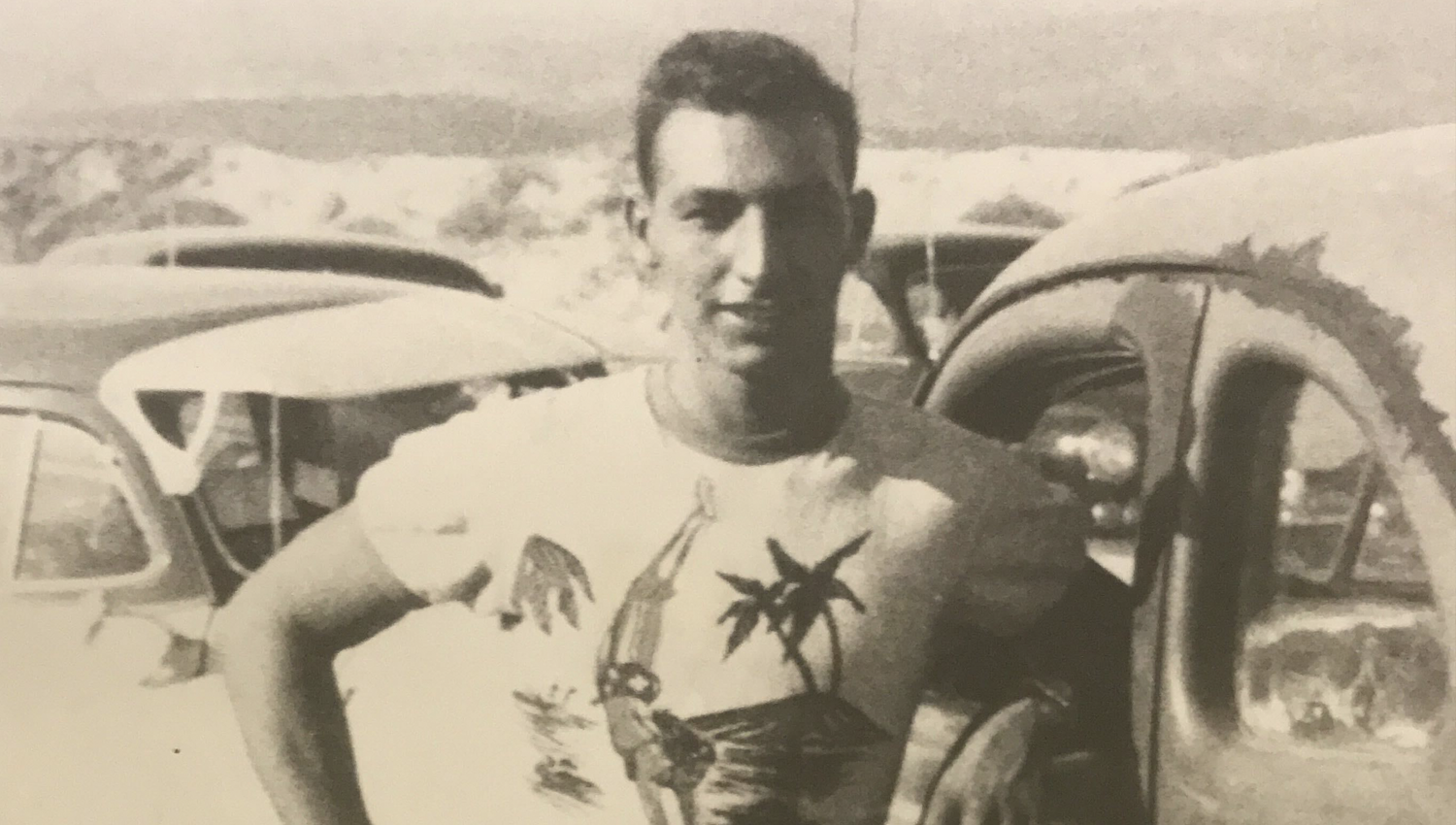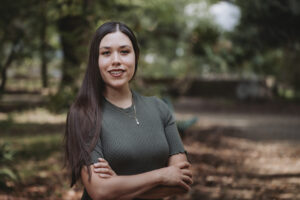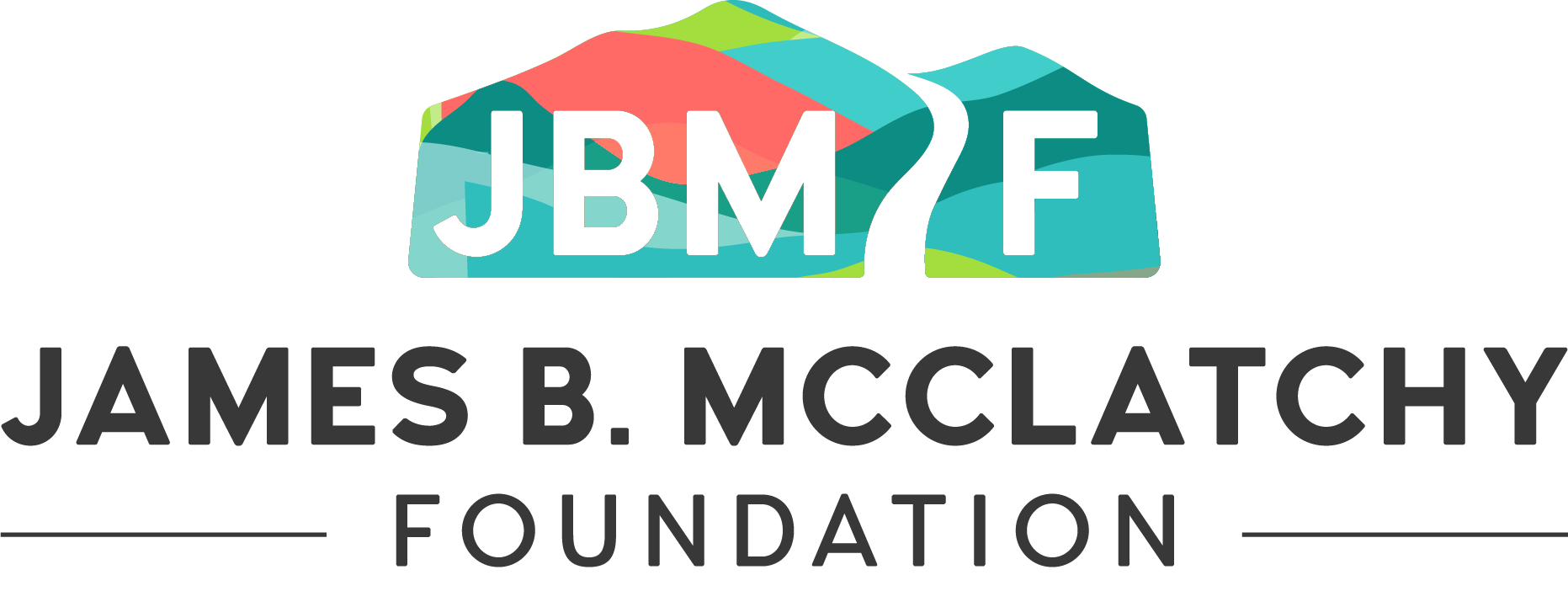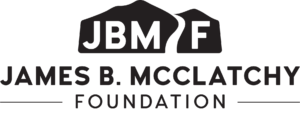
Storytelling is part of the fabric of the James B. McClatchy Foundation. Stories are powerful tools of connection, empathy, understanding, and history. As I embark on this new journey with JBMF, I am honored to share my story and how it keeps me grounded in support of our communities.
When people ask me where I’m from, I usually start my story by saying, “I moved from one valley to the other.” I grew up in the California San Fernando Valley and now call the Sacramento Valley home. I identify as a Valley girl and an American with indigenous and immigrant roots dating back to my grandparent’s generation. As a little girl, it was hard to understand that I embodied 7 different ethnicities. I lost my European connections entirely but glimpsed my Mexican cultural ties. I loved eating tamales at Christmas, singing Las Mañanitas for birthdays, and wearing campesino dresses. However, I am not fluent in Spanish and never felt like I belonged. My parents fully assimilated into American culture, like many who lost their identity because it was not nurtured or seen as an asset to speak multiple languages. English was the dominant language for survival and, in many ways, is still today. For most of my life, I’ve been confused and often stuck in the “in-between spaces” when searching for community and purpose.
My grandfather was a proud, first-generation Mexican American who wanted me to be proud of my heritage. He was the patriarch of our family, a veteran, an engineer, an active member of the faith community, and the person who encouraged me to write to my Congressman when I was 10 years old. He was the person who instilled the value of being civically active, tried to teach me Spanish before he passed, and always encouraged me that I could do anything I put my mind to. His teachings and passion guided me to where I am today. As the Director of Grantmaking Practice, I hope to carry on his legacy and give my energy to resourcing brilliant organizations that support systems and places of connection where people feel seen, heard, and valued for their lived experiences.
The James B. McClatchy Foundation JBMF is committed to supporting the next generation of diverse leadership in California’s Central Valley. It’s one of the three main goals of our work, including supporting multilingual learners and their families and community-powered local journalism. From Sacramento to Merced, to Bakersfield, and the small towns in between, we are led by the mission to support the hopes and dreams of the people here. And just like the intricate maze of channels and levees that feed life to this land, we can carve pathways towards achieving a multiracial democracy. It starts by investing in the people at the heart of our collective work that has been underfunded for decades.
If done thoughtfully, deliberately, and with buy-in from the community, philanthropy has the power to connect different sectors and bring people together to solve some of the most pressing challenges of the time. Foundations often hold space to listen to their various partners and spend lots of money on reports and needs assessments but fail to address those needs by making bold commitments to invest in the people facing those challenges deeply. Philanthropic organizations must act courageously by utilizing their generational wealth and investing in community-driven nonprofits and local leaders, which are the lifeblood of our democracy. By resourcing leaders across public and private entities who bring their cultures and unique perspectives to the table, we can shape a more equitable future for everyone. Let’s equip our future leaders with the stability and expertise necessary for their exceptional growth. Transformational change can happen if power structures shift and we listen to our partners and respond with multi-year direct support.
I urge conventional philanthropy to embrace new approaches. Allow inflexible logic models to gather dust and let resources cascade like water from a river delta unimpeded by restricting the outflow to a mere annual 5% trickle. Channel resources to staff salaries, invest in strategic plans and fund professional development. Ease the weight of laborious mid-year impact reports by opting for check-in calls instead. Participate in grantee-organized events instead of formal site visits. Collaboratively craft grant proposals to cultivate a sense of true partnership. These principles now underpin our grantmaking approach as we actively seek to embrace innovation.
Our partners share that the field of philanthropy has a long way to go to be equal partners. While transformational change can take a lifetime to see, we can at least lessen the administrative burdens now while continuing to push for new ways of distributing abundant resources. I’m eager to learn best practices from fellow foundations, inviting an open dialogue about our shared practices and viewpoints. This serves as an open invitation to continue the conversation about how we’re challenging conventions and fostering more inclusive grantmaking practices.

Director of Grantmaking Practice


